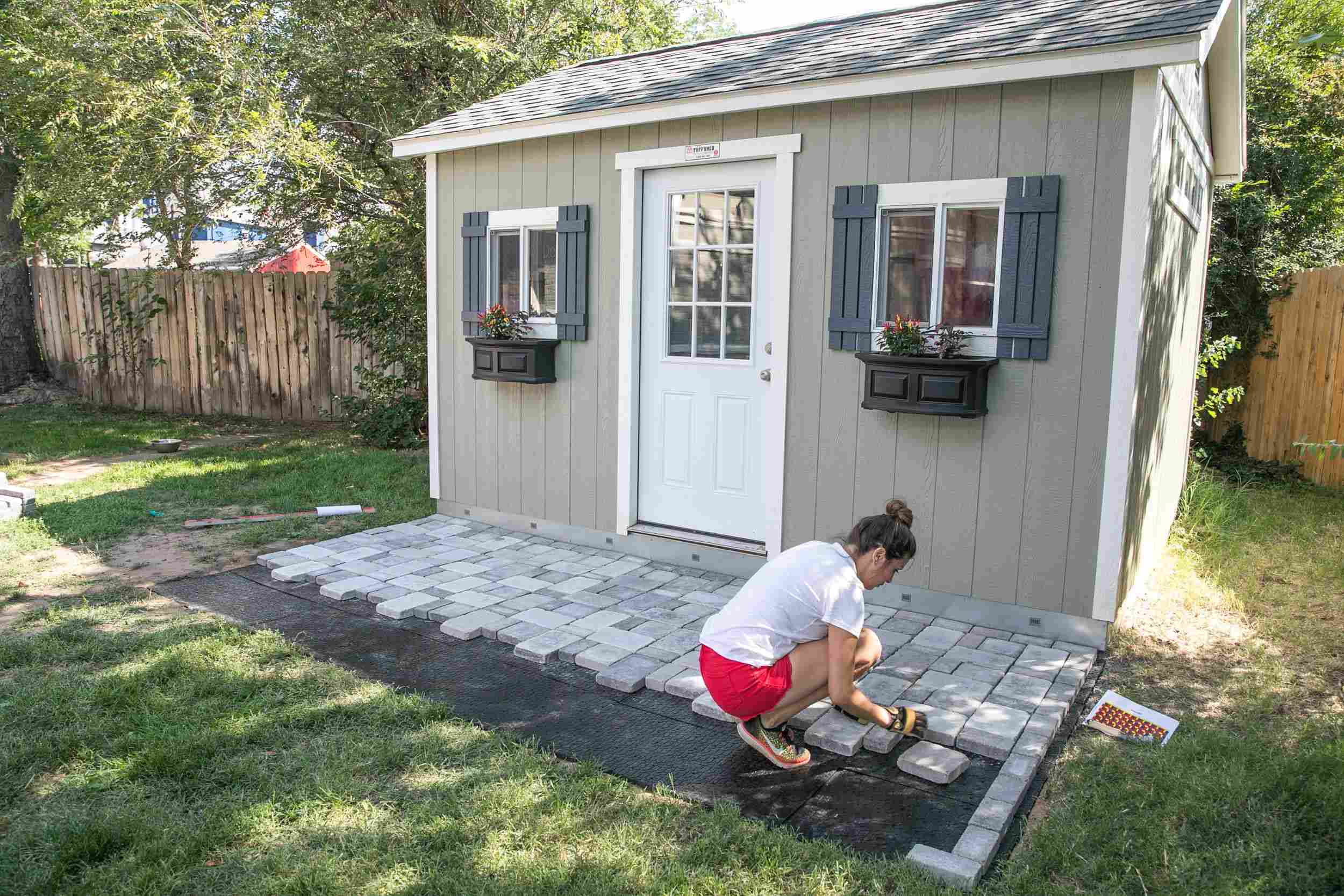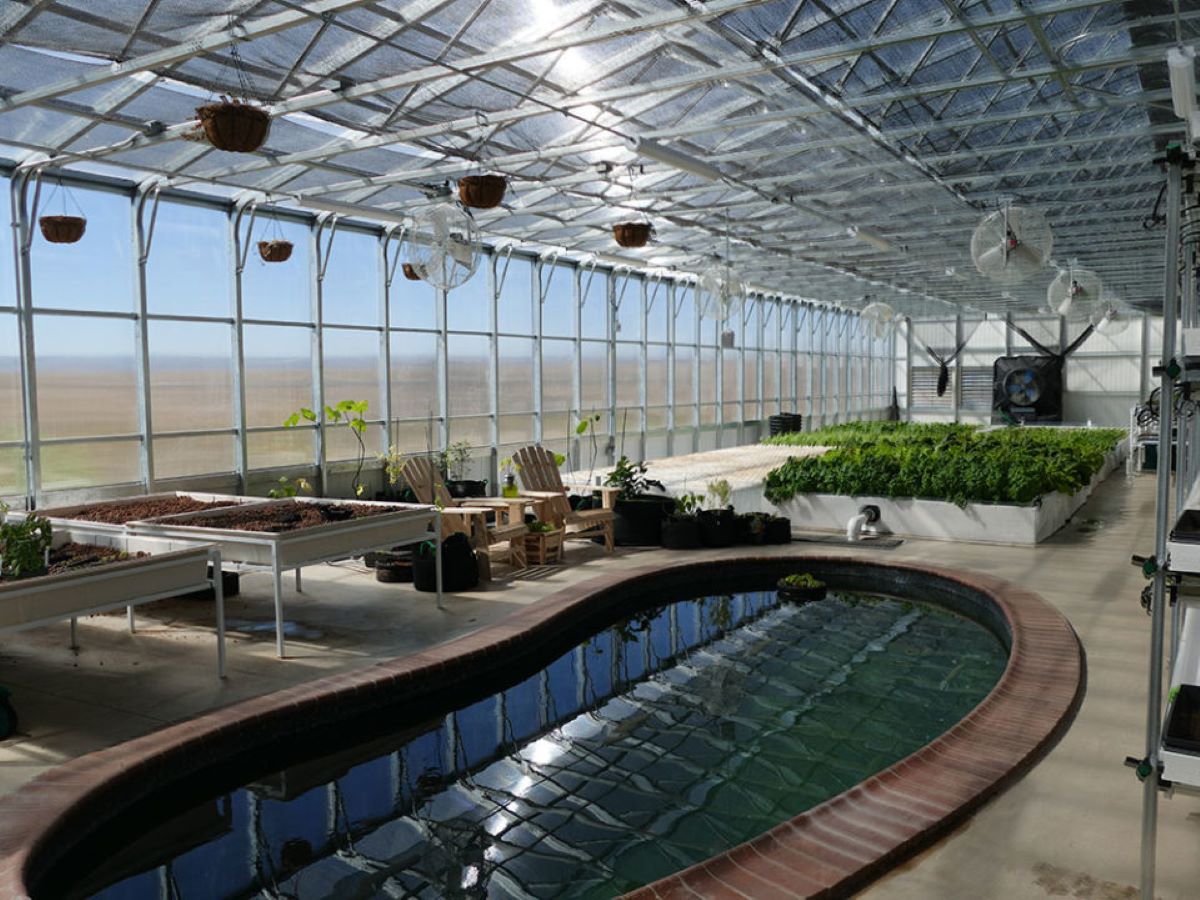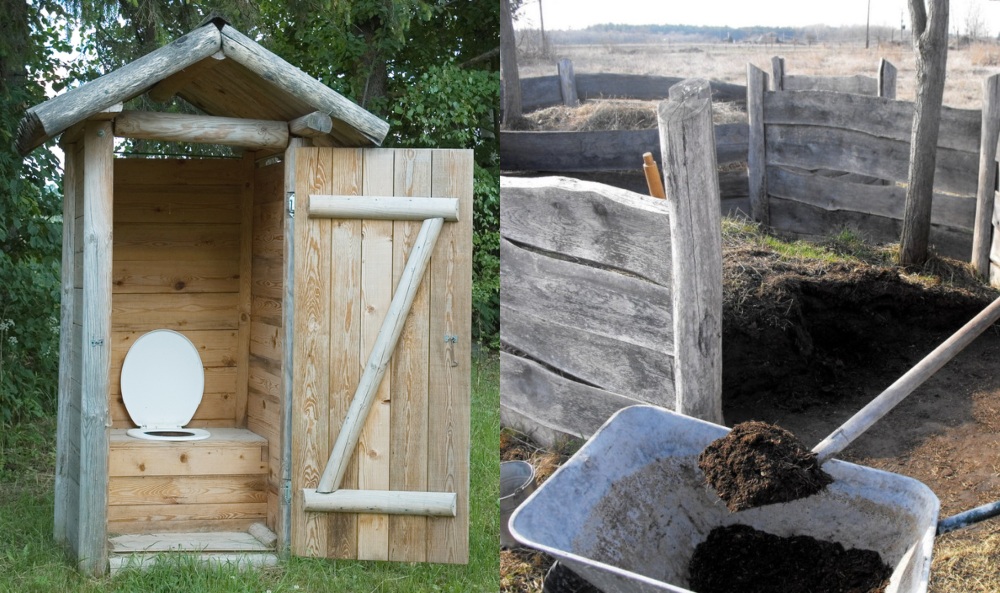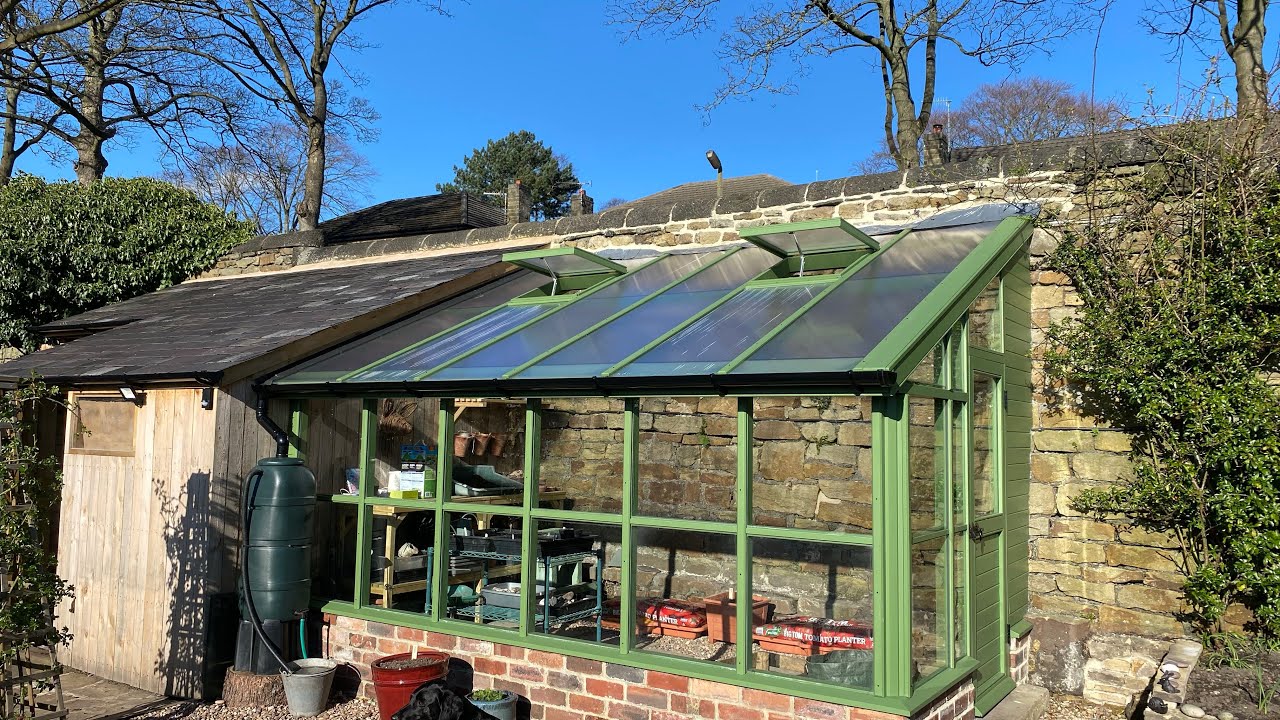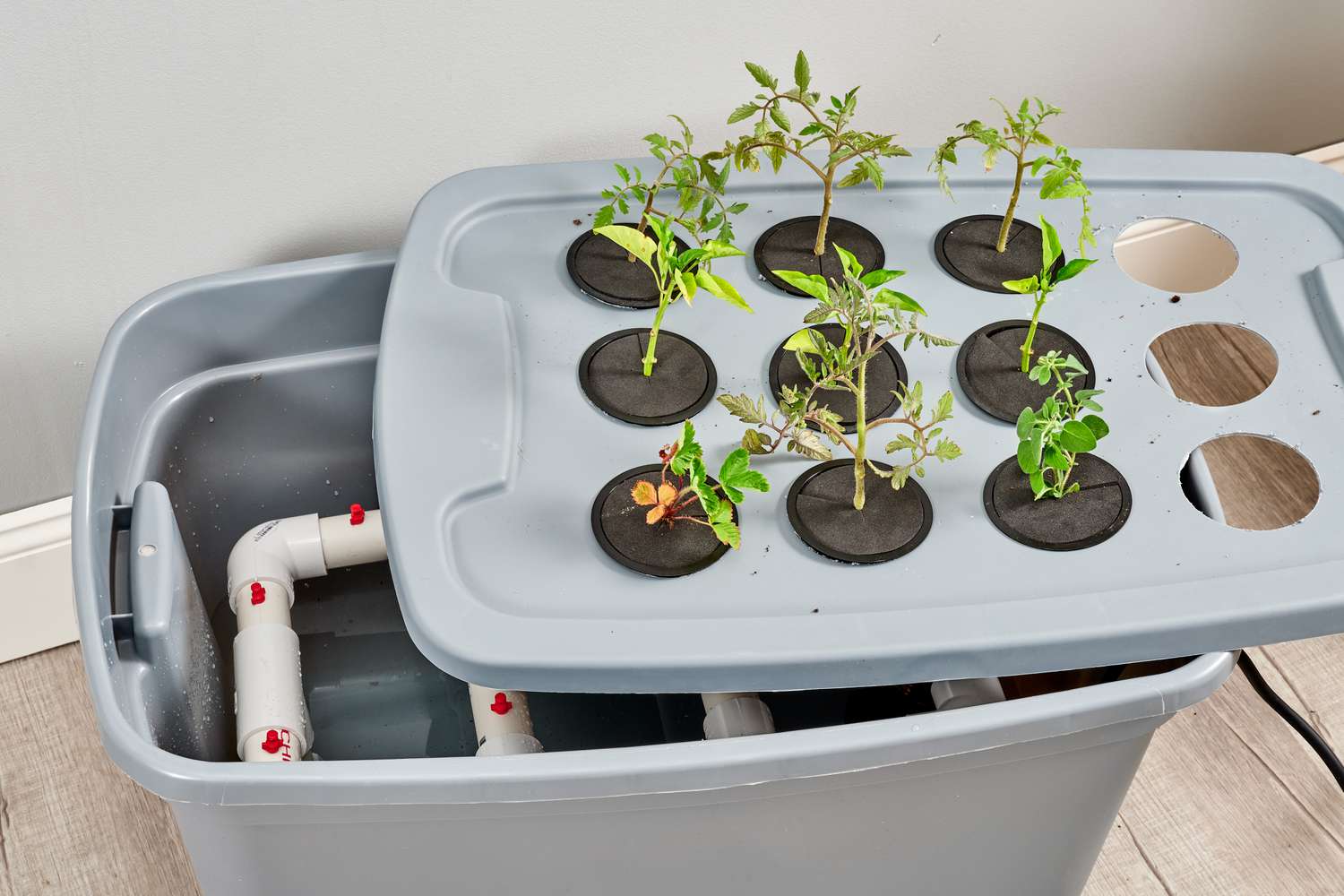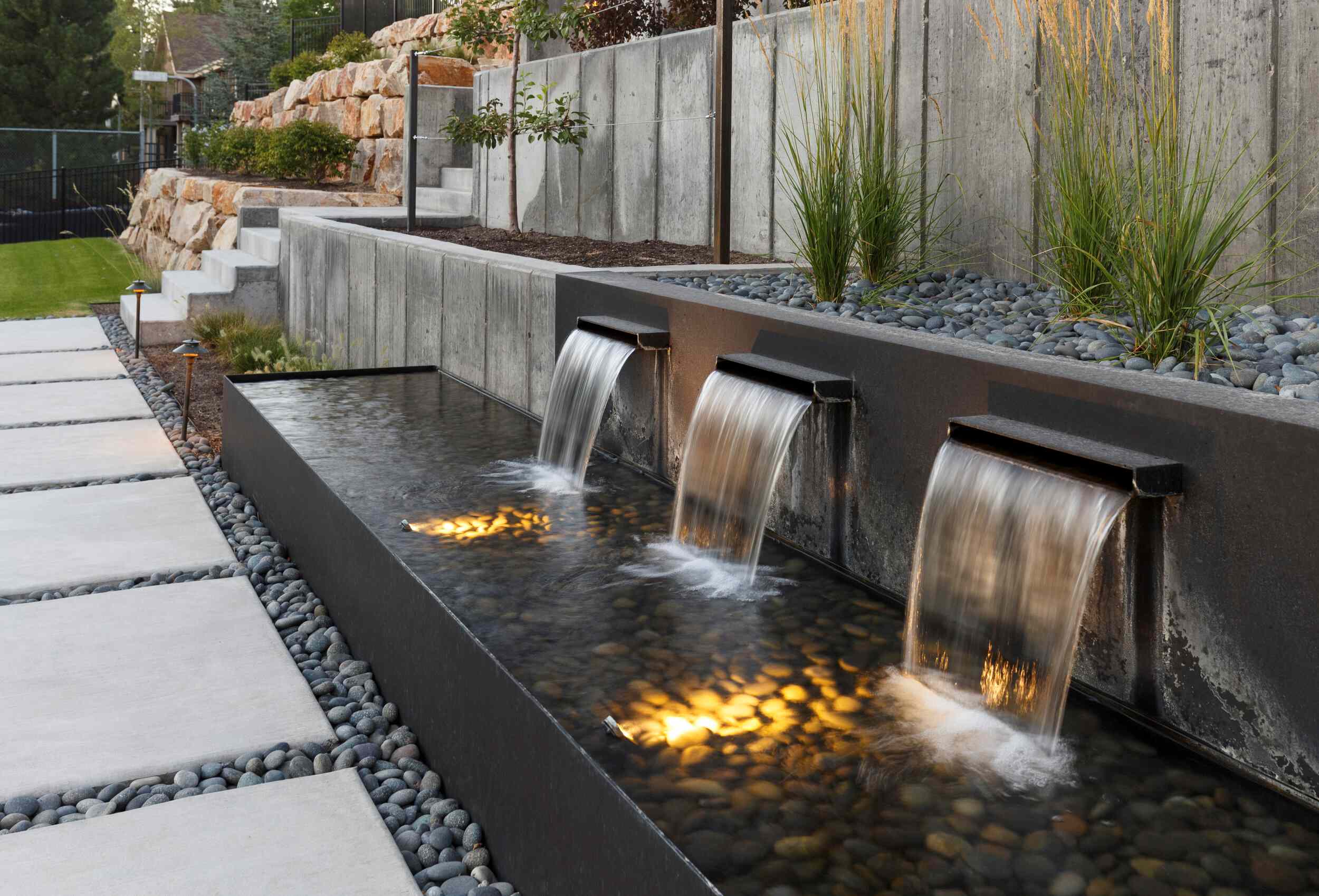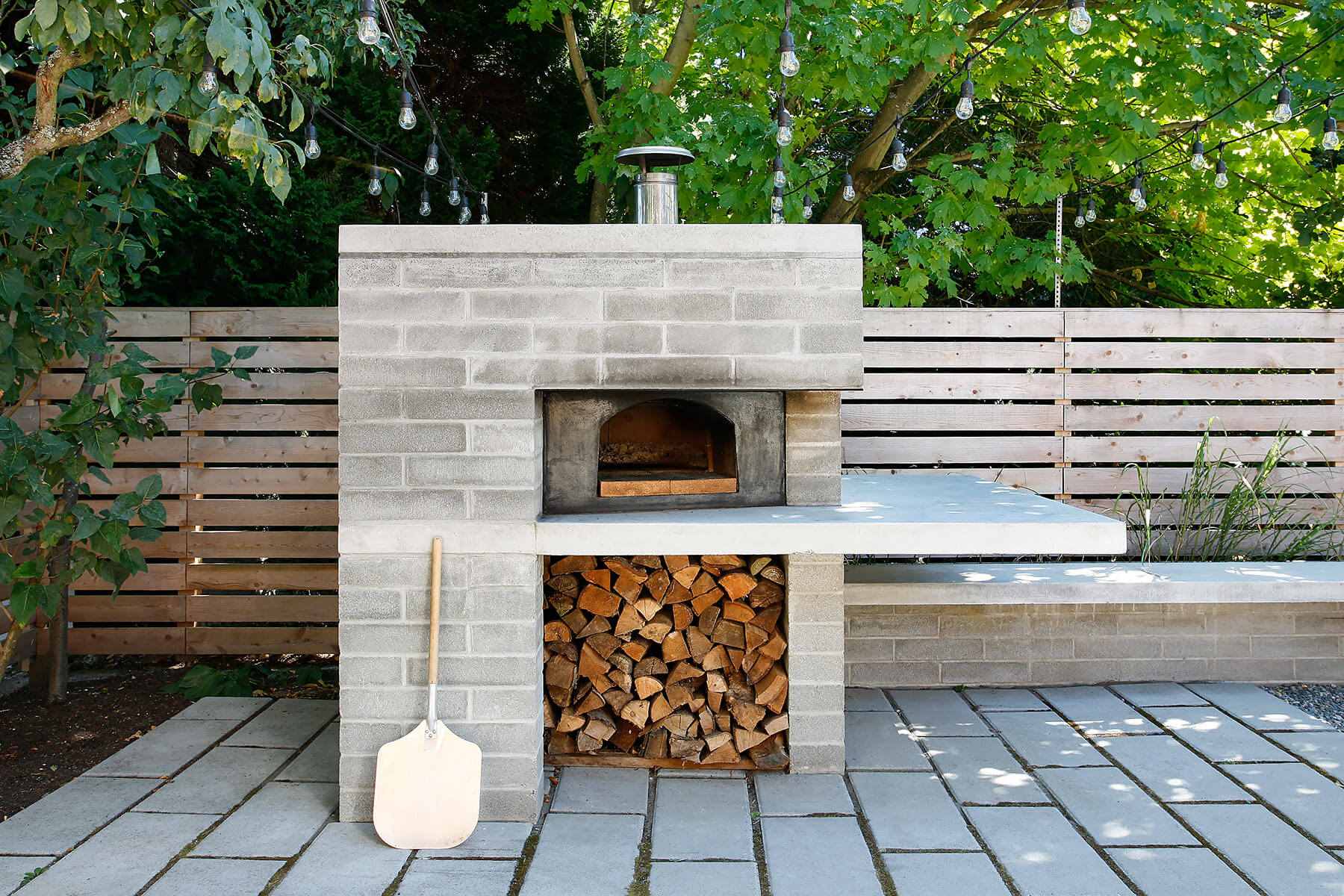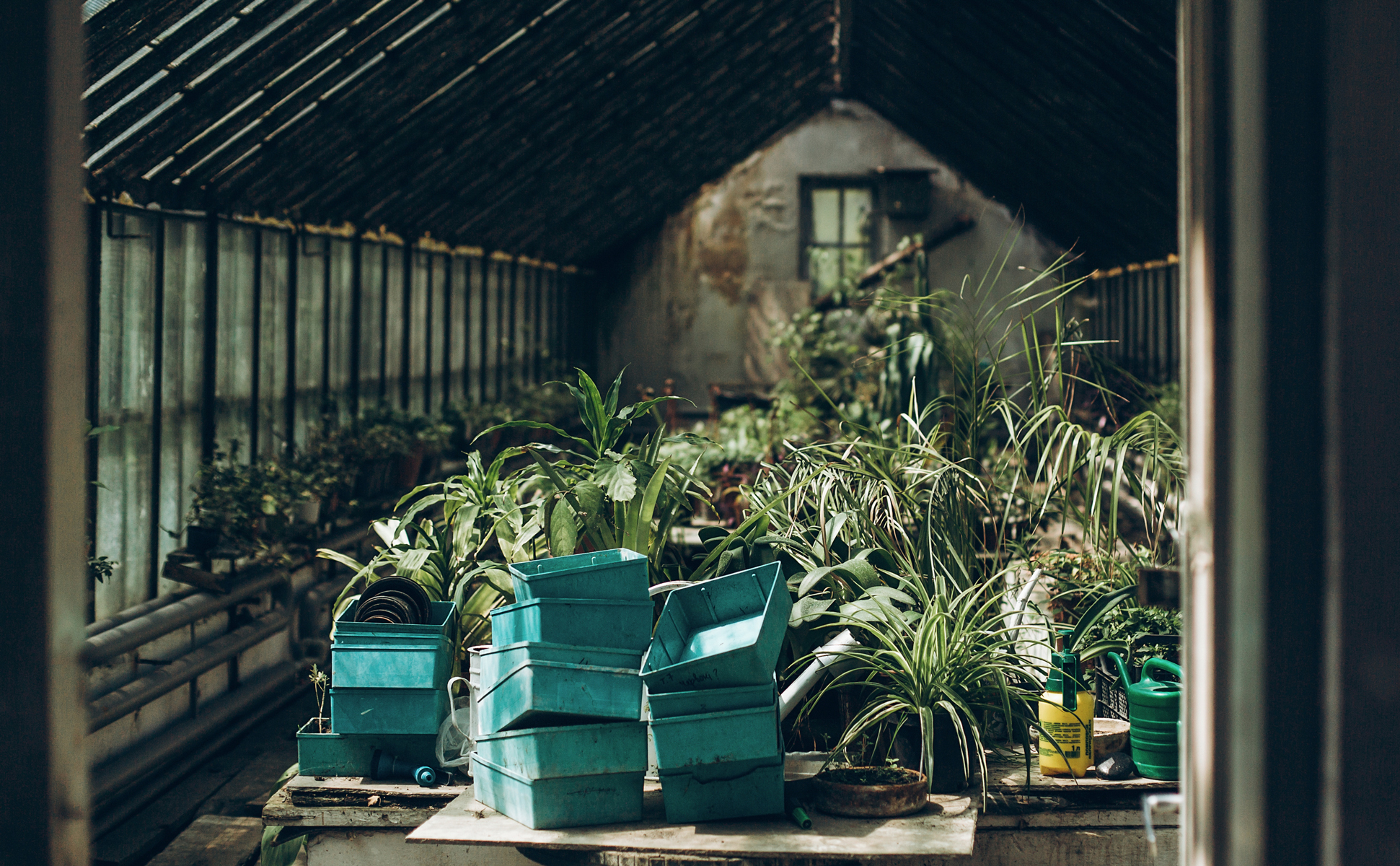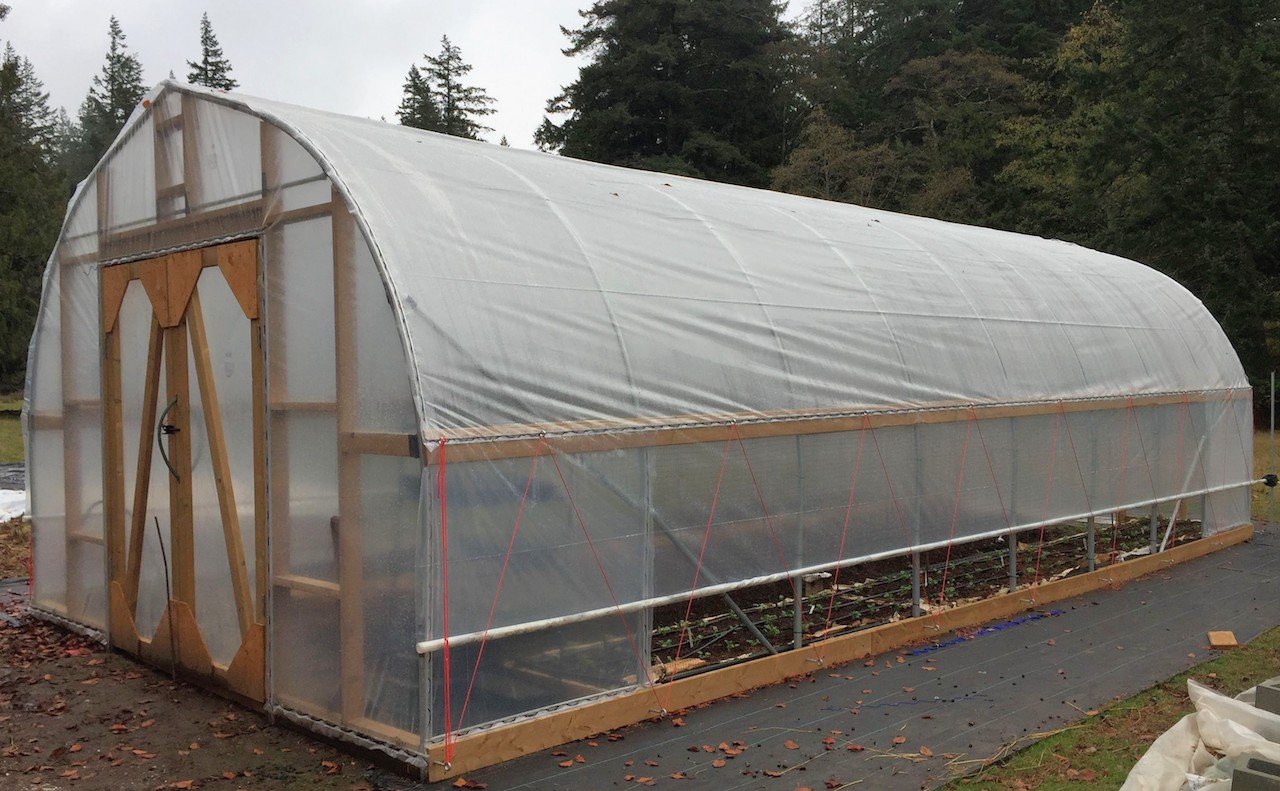Home>Gardening Techniques>DIY Projects>How To Build Landscaping Steps
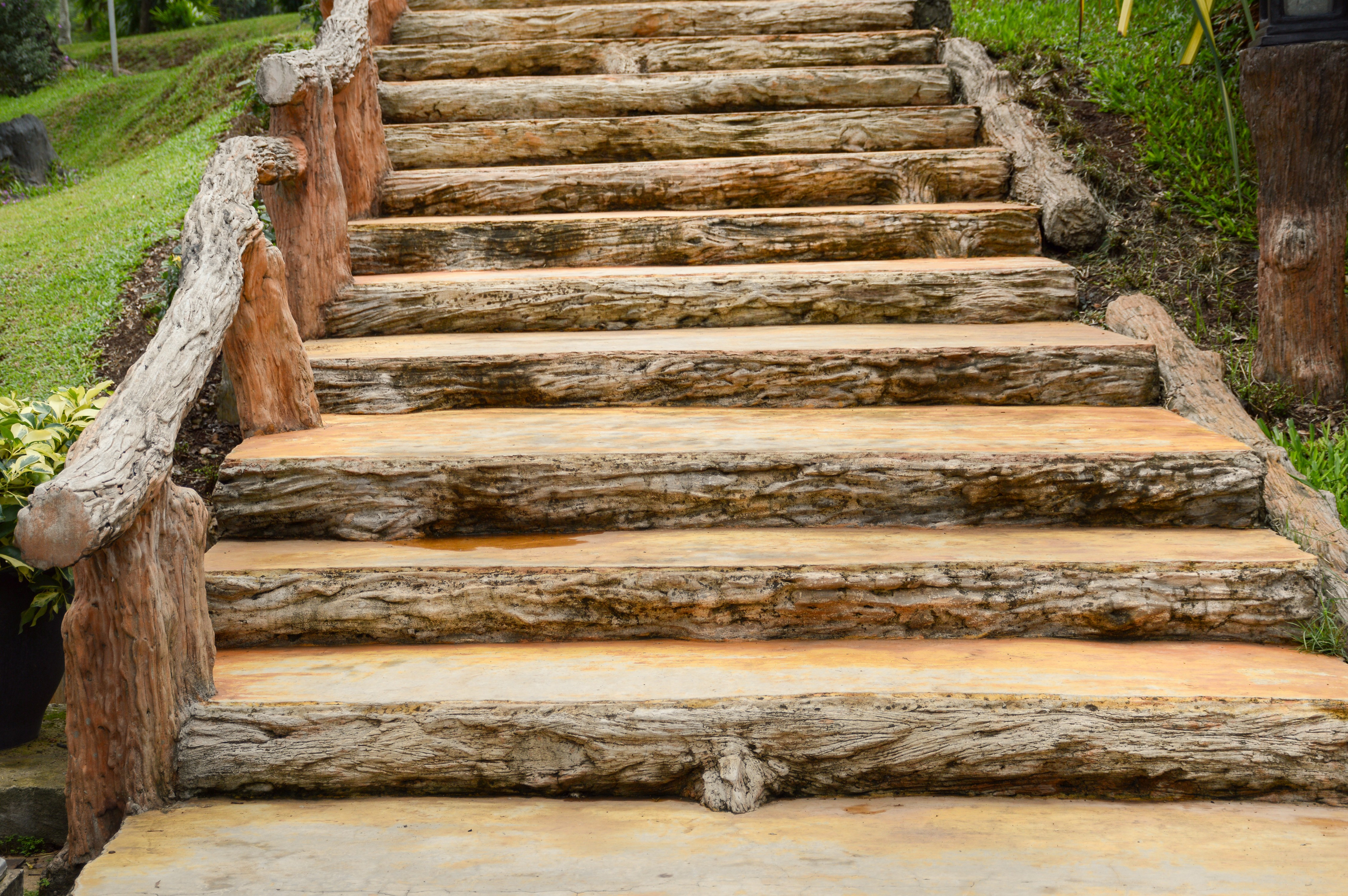

DIY Projects
How To Build Landscaping Steps
Published: August 19, 2023
Discover the best DIY projects for building landscaping steps and enhance the beauty of your outdoor space. Follow our step-by-step guide and create a stunning landscape on your own.
(Many of the links in this article redirect to a specific reviewed product. Your purchase of these products through affiliate links helps to generate commission for Chicagolandgardening.com, at no extra cost. Learn more)
Table of Contents
Introduction
Welcome to the world of DIY landscaping projects! If you’re looking to enhance the beauty and functionality of your outdoor space, building landscaping steps can be a rewarding and practical project to take on. Whether you want to create a grand entrance to your garden or provide easy access to a sloping area, well-built steps can add charm and value to your property.
In this comprehensive guide, we will walk you through the step-by-step process of building landscaping steps. From planning and designing to the finishing touches, we’ll cover everything you need to know to tackle this project with confidence. So, roll up your sleeves, grab your tools, and let’s get started!
Before we dive into the nitty-gritty details, it’s important to note that building landscaping steps requires some basic knowledge of DIY projects, as well as a few essential tools. If you’re a beginner, don’t worry! This guide is designed to be beginner-friendly, but it’s always a good idea to familiarize yourself with the required tools and safety precautions before you begin.
Building landscaping steps not only improves the aesthetics of your outdoor space but also makes it easier and safer to navigate. Whether you’re working with stone, wood, or other materials, these steps serve as a functional and visually appealing way to connect different levels of your garden or yard.
Throughout this guide, we’ll provide tips and tricks to make the process as smooth as possible. We’ll discuss how to plan and design your steps, gather the necessary materials, prepare the site, build the foundation, install the steps, and add the finishing touches. By the end, you’ll have the knowledge and confidence to create beautiful and durable landscaping steps that will impress your friends and family.
Now that we’ve covered the basics, let’s move on to the first step: planning and designing your landscaping steps.
Step 1: Planning and Designing
Before you start building landscaping steps, it’s crucial to plan and design your project. This step sets the foundation for a successful and visually appealing outcome. Here’s what you need to do:
1. Assess the Site: Begin by evaluating the site where you want to build the steps. Take note of the existing landscape, the slope, the desired location of the steps, and any potential obstacles. This assessment will help you determine the best layout and design for your steps.
2. Determine the Size and Height: Measure the distance between the top and bottom of the slope to determine the height of the steps. Decide on the number of steps you want, keeping in mind that each step should have a consistent rise and run for safety and comfort. Also, consider the width of the steps to accommodate the anticipated foot traffic.
3. Choose the Materials: Select the materials that best suit your preferences, budget, and the overall aesthetic of your outdoor space. Common materials for landscaping steps include natural stone, concrete, brick, and wood. Each material has its own unique characteristics and maintenance requirements, so choose wisely.
4. Sketch the Design: Create a rough sketch of your desired step design. Include the dimensions, placement of each step, and any additional features like handrails or lighting. This will serve as a visual reference throughout the construction process.
5. Check Building Codes and Regulations: Before proceeding, check with your local building department to ensure that your planned steps comply with any applicable codes and regulations. This step is crucial to ensure the safety and legality of your project.
6. Gather Inspiration: Get inspired by browsing through design magazines, online platforms, and even visiting local garden centers to gather ideas for your landscaping steps. Take note of the styles, materials, and colors that catch your eye and incorporate them into your design.
By thoroughly planning and designing your landscaping steps, you’ll have a clear roadmap for the construction process. This preparation saves time, minimizes errors, and ensures that your steps meet your vision and functional requirements.
Next up, let’s move on to step two: gathering the necessary materials for your project.
Step 2: Gathering Materials
Once you have a solid plan and design in place for your landscaping steps, it’s time to gather the necessary materials. Having all your supplies ready ahead of time will streamline the construction process and prevent unnecessary delays. Here’s what you’ll need:
1. Step Materials: Depending on your design preferences, choose the appropriate materials for your steps. If you opt for natural stone, select the type and size that suits your style. For wooden steps, pressure-treated lumber is a popular choice due to its durability and resistance to rot. If you prefer a more modern look, consider concrete or brick as your step material.
2. Gravel: Gravel serves as a crucial foundation for your steps. Determine the amount of gravel needed based on the size and depth of your steps. This will provide stability and proper drainage to prevent water accumulation.
3. Sand or Mortar Mix: Depending on the materials you’re using, you’ll need either sand or mortar mix. Sand is typically used for natural stone or wooden steps, while mortar mix is applicable for brick or concrete steps. Make sure to choose the appropriate type for your project.
4. Tools: Gather the necessary tools for the construction process. This may include a shovel, wheelbarrow, tape measure, level, masonry saw, rubber mallet, chisel, drill, screwdriver, and safety equipment such as gloves and goggles. Check your plan and ensure you have all the required tools for the installation of your chosen materials.
5. Optional Accessories: Depending on your design and personal preference, you may want to consider additional accessories such as handrails, lighting fixtures, or decorative accents. Take note of these items and include them in your material list.
6. Safety Precautions: Always prioritize safety when gathering materials. If you’re working with heavy or sharp objects, ensure you have the appropriate safety gear such as gloves, goggles, and sturdy footwear. Follow all safety guidelines and take necessary precautions to prevent any accidents.
Take the time to research and compare prices for the materials you need. Consider visiting local hardware stores, landscaping supply centers, or even online marketplaces to find the best deals. Also, remember to double-check your material list against your design plan to ensure you have all the necessary components.
With your materials readily available, you’ll be well-prepared to move on to the next step: preparing the site for the construction of your landscaping steps.
Step 3: Preparing the Site
Before you can start building your landscaping steps, it’s important to prepare the site. Proper site preparation ensures a stable and long-lasting installation. Here’s what you need to do:
1. Clear the Area: Begin by clearing any vegetation, debris, or obstacles from the site where you plan to construct your steps. Use a shovel, rake, or hand tools to remove any rocks, roots, or other materials that may interfere with the installation process.
2. Mark the Layout: Use stakes and string to mark the layout of your steps. This will provide a visual guide as you proceed with the construction. Ensure that the layout aligns with your design plan and that the steps are evenly spaced and aligned with the slope of the land.
3. Excavate the Soil: Use a shovel or a mini-excavator to dig out the soil to the desired depth for your steps. Remove enough soil to accommodate the recommended foundation depth for your chosen materials. Aim for a level base to ensure stability and proper drainage.
4. Install a Weed Barrier: To prevent weeds from growing through your steps, lay down a weed barrier fabric over the excavated area. This will help keep the steps weed-free and maintain their aesthetic appeal over time.
5. Compact the Soil: Use a tamper or a plate compactor to firmly compact the soil in the excavated area. This will ensure a solid base for the foundation and prevent future settling or shifting of the steps.
6. Add Gravel: Pour a layer of gravel onto the compacted soil. Level and compact the gravel to create a stable foundation. The thickness of the gravel layer will depend on the recommendations for your specific project.
7. Check for Levelness: Use a level to ensure that the gravel base is even and level. This is crucial for the stability and proper alignment of your steps. Adjust the gravel as needed to achieve a level surface.
By properly preparing the site, you’ll create a strong foundation for your landscaping steps. Taking the time to clear the area, mark the layout, excavate the soil, install a weed barrier, compact the soil, add gravel, and check for levelness will set the stage for a successful installation.
Now that the site is prepared, it’s time to move on to the next step: building the foundation for your landscaping steps.
Step 4: Building the Foundation
Building a solid foundation is a crucial step in constructing landscaping steps. The foundation provides stability and support for the steps, ensuring their longevity and durability. Here’s how to build a strong foundation:
1. Determine the Foundation Type: Depending on the materials you’re using and personal preference, there are different options for the foundation. For natural stone or wooden steps, a bed of compacted gravel is typically sufficient. For concrete or brick steps, a concrete footing or slab may be necessary. Refer to your chosen material’s installation guidelines for specific requirements.
2. Excavate for the Foundation: If you’re building a concrete footing or slab, excavate the designated area according to the recommended depth and dimensions. Ensure that the excavation is level and free from any debris or obstructions.
3. Install Forms or Frames: For concrete footings or slabs, build forms or frames using lumber, ensuring they are properly aligned and level. Secure the forms in place using stakes or screws. This will contain the concrete and give it the desired shape during pouring.
4. Prepare for Concrete or Gravel Fill: Depending on your foundation type, either prepare for pouring concrete into the forms or fill the excavated area with compacted gravel. Follow the manufacturer’s instructions for concrete mix ratios, curing times, and any necessary reinforcement. Alternatively, for gravel fill, layer and compact the gravel to the required thickness and levelness.
5. Pour Concrete or Fill with Gravel: If using concrete, carefully pour the mixture into the forms, ensuring it fills the entire designated area. Use a screed board and a trowel to level the surface. If using gravel, evenly distribute and compact the layers until reaching the desired level.
6. Cure and Settle: Allow the concrete to cure according to the manufacturer’s instructions, ensuring it is protected from excessive moisture and temperature fluctuations. If using gravel, give it time to settle and compact over a few days.
7. Check for Levelness: Use a level to ensure that the foundation is even and level. Adjust as necessary by adding or removing material to achieve the desired alignment.
By taking the time to build a solid foundation, you’ll create a base that can withstand the weight and pressure of the steps. Whether it’s pouring concrete or compacting gravel, following these steps will ensure a strong and stable foundation for your landscaping steps.
With the foundation in place, it’s time to move on to the exciting part – installing the first step of your landscaping project.
Step 5: Installing the First Step
Now that you have a solid foundation for your landscaping steps, it’s time to start building them. In this step, we will focus on installing the first step, which sets the tone for the rest of the project. Here’s how to get started:
1. Prepare the Foundation: Ensure that the foundation is clean, level, and dry before starting the installation. Remove any dirt, debris, or excess gravel from the surface to provide a smooth and even base for the step.
2. Apply Adhesive: If you’re using natural stone, brick, or any other material that requires adhesive, apply a layer of the recommended adhesive to the top surface of the foundation. The adhesive will help bond the step to the foundation securely.
3. Position the First Step: Carefully place the first step onto the adhesive or the prepared foundation. Ensure that it is level and align it with the layout and design plan. Use a level to check for both horizontal and vertical alignment.
4. Adjust and Secure: If necessary, adjust the positioning of the first step by tapping it gently with a rubber mallet. Make sure it is firmly set in place and securely bonded to the foundation. Double-check the levelness and alignment before proceeding.
5. Check for Stability: Test the stability of the first step by putting some weight on it and walking on it. Ensure that it feels secure and doesn’t shift or wobble. If needed, make any necessary adjustments to ensure stability.
6. Fine-tune the Placement: Use a chisel or a masonry saw to make any necessary adjustments to the step. This may include trimming off any excess material or cutting the step to fit into the desired space properly. Take caution and wear protective gear when using these tools.
7. Clean and Finish: Remove any excess adhesive or dirt around the edges of the step. Use a brush or a damp cloth to clean the surface of the step and make it free from any debris. This will give your first step a polished and finished look.
By following these steps, you’ll successfully install the first step of your landscaping project. It’s important to take your time and ensure that the step is level, aligned, and securely bonded to the foundation. This will set the stage for easy and accurate installation of the subsequent steps.
Now that the first step is in place, it’s time to move on to the next step: installing the subsequent steps to complete your landscaping staircase.
Step 6: Installing the Subsequent Steps
With the first step securely in place, it’s time to continue the installation of the subsequent steps. This step-by-step process ensures proper alignment, stability, and a cohesive look for your landscaping staircase. Here’s how to install the remaining steps:
1. Apply Adhesive: If your chosen material requires adhesive, apply a layer of adhesive to the top surface of the previously installed step. This will create a strong bond between the steps.
2. Position the Next Step: Carefully place the next step onto the adhesive, ensuring that it is level and aligned with the first step. Use a level to check for both horizontal and vertical alignment. Make any necessary adjustments by tapping with a rubber mallet.
3. Secure the Step: Once the step is properly positioned, secure it by pressing it down firmly. Ensure that it is securely bonded to the adhesive or the foundation. Double-check the levelness and stability of the step before proceeding.
4. Repeat the Process: Continue applying adhesive, positioning the next step, and securing it in place. Work your way up the staircase, step by step, ensuring each one is level, aligned, and stable. Take your time to ensure a precise installation.
5. Check for Consistency: Throughout the installation process, periodically step back and assess the overall consistency of the steps. Check for uniform rise and run, as well as even spacing between the steps. Make any necessary adjustments to maintain a cohesive and visually appealing staircase.
6. Cut Steps if Needed: If the size or shape of the space requires it, you may need to cut some steps to fit properly. Use a masonry saw or a suitable cutting tool to carefully trim the step to the desired size and shape. Take proper safety precautions when using cutting tools.
7. Ensure Stability: As you install each subsequent step, test for stability by applying weight and gently walking on the steps. Check for any movement or wobbling. If needed, make any necessary adjustments to enhance the stability and ensure a secure staircase.
By following these steps, you’ll successfully install the subsequent steps of your landscaping staircase. Take your time to ensure levelness, alignment, and stability at each step. This will result in a visually appealing and functional staircase that enhances your outdoor space.
Now that the steps are installed, it’s time to add the finishing touches to complete your landscaping project.
Step 7: Finishing Touches
Congratulations on reaching the final step of your landscaping project! Now it’s time to add those finishing touches that will elevate the look and functionality of your newly constructed steps. Here’s what you need to do:
1. Fill Gaps and Joints: Depending on the material used for your steps, there may be gaps or joints between them. Fill these spaces with the appropriate material, such as mortar, gravel, or sand. This will not only enhance the aesthetic appeal but also provide stability and prevent weed growth.
2. Add Handrails: If your steps are higher than a few feet or if you want to enhance safety and accessibility, consider adding handrails. Choose a design that complements your outdoor space, whether it’s a sleek metal design, a rustic wooden rail, or something in between. Make sure the handrails are securely anchored and meet local safety codes.
3. Install Lighting: Enhance the beauty and safety of your landscaping steps by installing lighting fixtures. Consider options like solar-powered stake lights, low-voltage LED lights, or even built-in step lights. The lighting will not only illuminate the steps but also create an inviting ambiance in your outdoor space.
4. Add Landscaping Elements: Integrate landscaping elements around the steps to blend them seamlessly into your garden or yard. Plant colorful flowers, ornamental grasses, or ground covers around the steps to create a visually appealing connection between the steps and the surrounding landscape. Add mulch or decorative rocks for a polished finish.
5. Regular Maintenance: To ensure the longevity and beauty of your landscaping steps, establish a regular maintenance routine. Sweep or hose off debris regularly, remove any weeds that may sprout between the steps, and inspect for any signs of damage. Depending on the material used, you may need to reseal, repaint, or replace any worn-out parts.
6. Enjoy Your Finished Steps: Finally, take a moment to step back and admire your hard work. Your beautifully constructed landscaping steps are not only functional but also a testament to your DIY skills and creativity. Relax and enjoy your outdoor space while appreciating the enhanced accessibility and visual appeal that the steps bring.
By adding these finishing touches, you’ll elevate the overall look and functionality of your landscaping steps. Whether it’s filling gaps, installing handrails and lighting, incorporating landscaping elements, or maintaining the steps regularly, these final steps will provide the perfect finishing touch to your project.
With the finishing touches complete, you’ve successfully built your landscaping steps from start to finish. Give yourself a pat on the back for a job well done!
Conclusion
Congratulations on completing your landscaping step project! By following the step-by-step process in this guide, you have successfully transformed your outdoor space with a beautiful and functional staircase. Whether you’ve chosen natural stone, wood, concrete, or brick, your newly constructed steps are sure to enhance the aesthetics and accessibility of your property.
This comprehensive guide has taken you through every stage of the project, from planning and designing to gathering materials, preparing the site, building the foundation, and installing each step with precision. By paying attention to detail and following the recommended guidelines, you have created a strong and stable staircase that will stand the test of time.
Remember, safety is paramount throughout the construction process. Always wear the appropriate safety gear, follow manufacturer instructions for tools and materials, and adhere to local building codes and regulations. By prioritizing safety, you’ve ensured the well-being of yourself and others who will use the steps.
Now that your project is complete, take a moment to admire and enjoy your hard work. Your landscaping steps not only provide a functional way to navigate different levels of your outdoor space but also serve as a stunning focal point that adds value and charm to your property.
As the seasons change, don’t forget to regularly maintain and clean your steps. Keep them free from debris, weeds, and any signs of wear and tear. By taking care of your steps, you’ll preserve their longevity and keep them looking their best for years to come.
Building landscaping steps can be a challenging yet rewarding DIY project. The knowledge and skills you’ve acquired in the process can be applied to future projects, whether it’s in your garden or other areas of your home. So, continue to explore and expand your DIY abilities with confidence.
Thank you for following this guide and investing your time and effort into creating a stunning set of landscaping steps. We hope that they bring you joy, functionality, and many memorable moments in your outdoor space.
Happy landscaping and enjoy your beautiful new steps!
